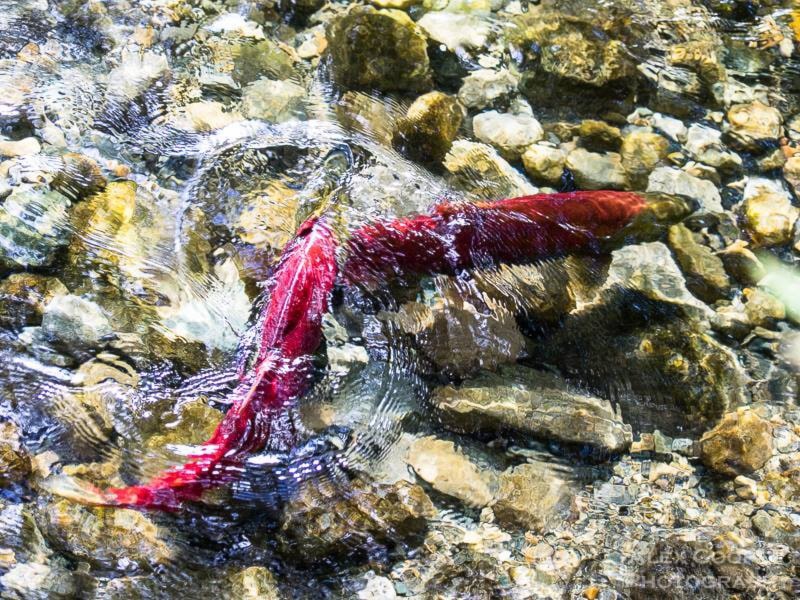By James Murray, Observer columnist
In last week’s column I made reference to the fact that, for as long as I can remember, come October, I’ve made my way out to Roderick Haig-Brown Provincial Park to witness the age-old ritual of sockeye salmon returning to their spawning grounds along the Adams River.
I have always felt privileged to watch such a truly amazing and awe-inspiring phenomenon. However, in recent years, things have changed on the Adams, especially for the sockeye salmon.
Where there were once pools containing thousands of bright red salmon, there are now scattered pools containing a few hundred, sometimes a few dozen. With the passing of each year, the situation becomes even more grim.
There is a solution, however. All we need to do is act upon it.
In 2009, when the sockeye returns had become disturbingly low, the federal government created a public inquiry (the Cohen Commission) to determine just exactly what was happening to all the disappearing sockeye salmon.
Justice Bruce Cohen spent three years gathering testimony from the public, scientists and First Nations to put together a three-volume report of more than 1,000 pages.
The commission’s final report, The Uncertain Future of the Fraser River Sockeye, was heralded at the time as being “a blueprint for salmon conservation.”
The report made a total of 75 recommendations. It was tabled in the House of Commons back on Oct. 31, 2012. Since then, few, if any, of the commission’s recommendations have actually been put in place.
Instead, the federal government has simply stood by and watched as sockeye salmon numbers have steadily declined.
It would be wrong for the government to have spent $26.4 million and not implement the recommendations while there is still a window of opportunity to actually do something to save the Fraser and Adams River sockeye.
The Department of Fisheries and Oceans Canada (DFO) has stated that since the release of the commission’s report, it is doing all that it can, “within its mandate and available resources, to address the health and long-term sustainability of Fraser River sockeye salmon stocks….”
A closer look, however, indicates that many – in fact, the majority of the recommendations, especially those with specific deadlines, are far from being even partially implemented.
There also does not seem to be a whole lot of transparency when it comes to what has and has not been done to ensure the long-term sustainability of the Fraser and Adams River sockeye.
The commission concluded there is no one cause for the decline of the salmon stocks – over fishing by both commercial and First Nations fishermen, poaching and pollution are all part of the problem. Also, within the recommendation of the Cohen Commission are a number of specific references to factors such as climate change and global warming.
In 2016, a panel of DFO research scientists said that 2014 and 2015 saw the warmest water temperatures ever recorded in the northeast Pacific, and that these warmer temperatures have compromised the regular food supply that Pacific salmon rely on, which in turn has led to smaller and less healthy fish.
They also stated the warmer temperatures have brought more predators into coastal waters which prey on both adolescent and mature salmon.
The panel even went on to suggest that warm temperatures are also having an effect on inland freshwater ecosystems where salmon migrate and spawn. Things are indeed changing and not just on the Adams.
Time is running out for the Fraser and Adams River sockeye.
The federal government needs to follow the recommendations put forward by the Cohen Commission and fully implement them before it’s too late.
